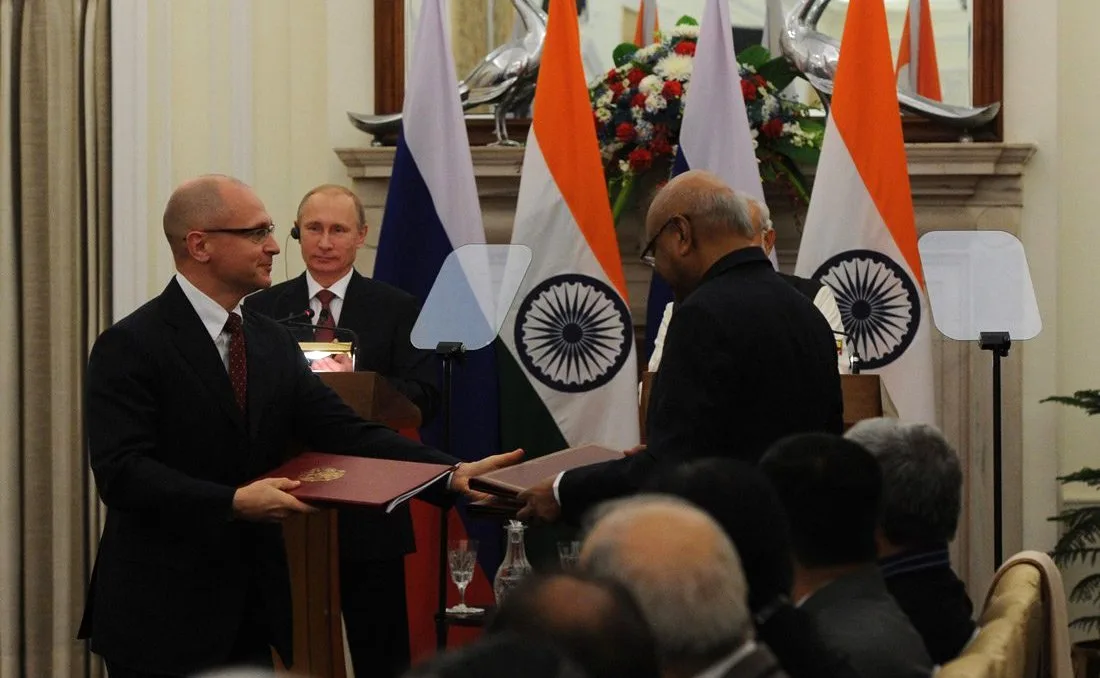India and Russia are looking for ways to deepen trade ties.
Moscow sees the South Asian country as an alternative market for its products in the face of crippling Western sanctions, while New Delhi, for its part, hopes to reduce a growing trade deficit, writes India’s agency chief, Nirmala Ganapathy in The Strait Times.
India’s imports from Russia increased fivefold to $41.56 billion between April 2022 and February 2023 compared to the previous corresponding period, mainly due to oil imports, while exports to the country have reached $3 billion.
Russia, unable to sell to the West because of the Ukraine war, has sold oil at reduced prices to both India and China.
In a bid to boost trade, a 50-member Indian business delegation from the agriculture and food processing sector left for Russia on a four-day visit from April 24 to look for opportunities there.
We are looking at animal feed, soybeans and ready meals, said Dr. Ajay Sahai, director general and managing director of the Federation of Indian Export Organisations.
The delegation spent four days in Moscow and St Petersburg.
Dr. Sahai noted that “the huge trade deficit is a concern, but it is also an opportunity to increase exports exponentially.”
We must diversify exports into cars and car components, electronics, medical equipment, solar cells, textiles, food and agriculture, he said.
Despite the increasingly close ties with the US and the West, India has continued to maintain close ties with Russia.
The two countries have close defence ties with 60 percent of India’s weapons being of Russian origin, making it necessary for India to strike a balance in the Ukraine war.
In the UN, much to the frustration of the West, India has abstained from voting against Russia in many resolutions, but has urged Moscow to seek a peaceful solution to the differences and put an end to the war in Ukraine.
The two sides are now in discussions to open a maritime corridor between the southern port city of Chennai and Vladivostok, a port city on the Pacific Ocean in Russia.
The route, which has been in the works since 2019, will halve the transit time for cargo to 20 days, compared to the current route that runs to Russia’s Far East through Europe.
India has also considered sending goods through the International North-South Transport Corridor, a 7,200-km network of railways, highways and sea routes connecting Russia and Iran to India.
It is not clear whether the trade between India and Russia, which is quite anaemic, can benefit from the current recovery as a result of the oil situation. It is certainly a possibility because Russia is sanctioned by the West, says Manoj Joshi, distinguished fellow at the Observer Research Foundation in New Delhi.
But when it comes to manufacturing products, India will find it difficult to compete with China. Of course, officially managed trade can be an option, but it has its limitations.
Exports have increased, but far more modestly than imports. India’s exports to Russia, which include technical goods, pharmaceuticals and chemicals, rose to $337.58 million in February 2023 from $280 million in October 2022.
Russia already buys more agricultural goods from India,as an example between February 2022 and February 2023 coffee exports increased from $4 million to around $7 million.
But a scheme to pay in rupees and rubles has not taken off due to several problems, including exchange rate differences. Reports say this is likely to have affected how India will pay for military spare parts and new equipment from Russia.
Still, Russia has new motivation to deepen trade with India, even as dependence on China increases, analysts say.
Greater economic and political engagement with India is a major gain for Moscow. Not only could it eventually open up a larger energy market than Europe, but a strengthened relationship could provide a counterweight to China and help Moscow avoid slipping into a subordinate role vis-à-vis its eastern neighbour, says Chris Weafer, CEO of Macro-Advisory Limited , an independent strategic consulting firm in the Eurasia region.
Trade between China and Russia will reach a record $190 billion in 2022, according to the Chinese Customs Service.
For India, access to discounted Russian oil, coal and (eventually) gas along with fertilisers and other materials helps to create a secure supply of critical industrial materials. This will help make large parts of the Indian economy more competitive globally and will increase and diversify exports. It will eventually help to create more and better-paid jobs, concludes Weafer.

